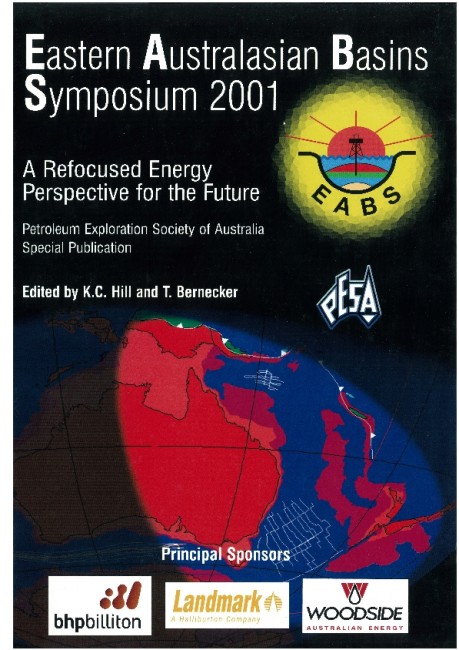Publication Name: Eastern Australian Basins Symposium 2001
Authors: R.H. Funnell, V.M. Stagpoole, A. Nicol, S.D. Killops, A.G. Reyes and D. Darby
Date Published: November 2001
Number of Pages: 31
Reference Type: Magazine Article
Abstract:
The oil and gas/condensate Maui Field in the Taranaki Basin lies 30 km off the west coast of the North Island, New Zealand. The field consists of two broad anticlinal closures formed by Miocene compression, and structurally enhanced by Plio-Pleistocene normal faults to the east. Recoverable reserves for the Maui Field are estimated at 3.8 TCF gas and 200 MMbbl oil and condensate. Hydrocarbon reservoirs occur within stacked marginal marine-terrestrial sandstones of Paleocene to Eocene age, which directly overlie basement.Late Cretaceous, coal-sourced oils in the Taranaki Basin exhibit high pristane:phytane ratios, abundant hopanes, land-plant-derived terpanes, and are relatively depleted in steranes. Maui oils can be distinguished, however, from other Taranaki Basin oils by their plant-derived triterpane distributions and isotopic composition. Maui gases consist of -85% methane and 3HefHe ratios, indicated by a RMRA ratio of 3.4, suggest a mantle-derived component may be present.
The charge history of the Maui Field is uncertain. There are several possible oil and gas migration routes from potential kitchen areas. Multi-lD models are used to reconstruct the timing and distribution of hydrocarbon generation and primary expulsion from Late Cretaceous coals. A combination of petrographic techniques, use of a Shale Gouge Ratio for fault permeability, and 2D models along identified migration routes are used to examine the various reservoir charging scenarios. Significant factors in the charge of the Maui Field include: multiple kitchens for hydrocarbon generation, fault zone permeability, and displacement of oil by later gas charge.


